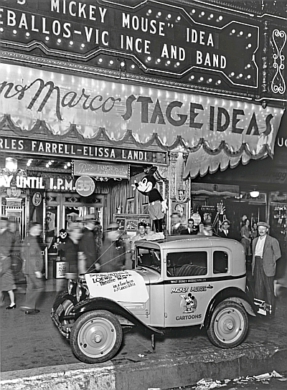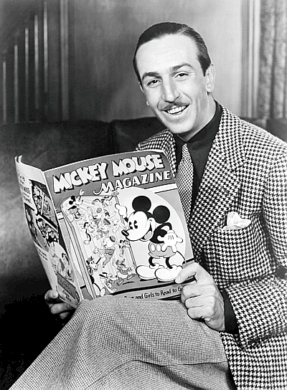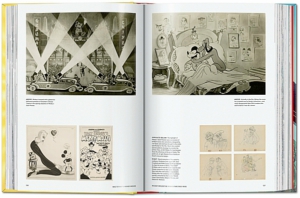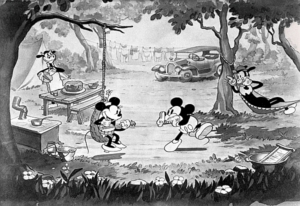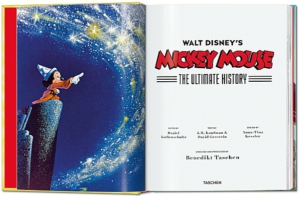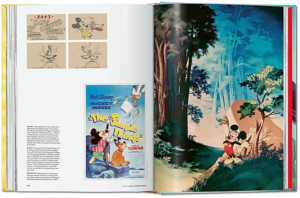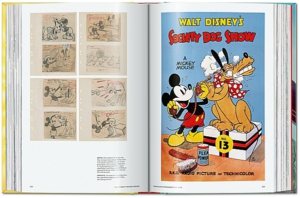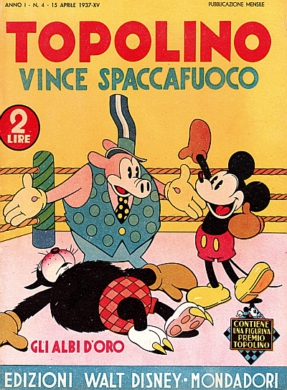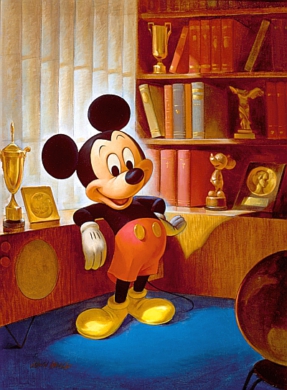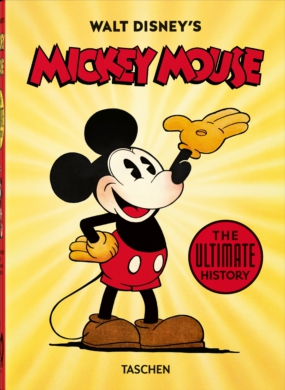 Much has been written about the economic power and cultural influence of The Walt Disney Company.
Much has been written about the economic power and cultural influence of The Walt Disney Company.
Not only that today with their components Disney Entertainment, Pixar, ESPN, Disney Parks and many others, Disney is a major player in entertainment business.
Furthermore, the company practically holds the rights to and rules the future of several franchise themes such as anything related to Lucasfilm, Indiana Jones, Pirates of the Caribbean, Star Wars, and Marvel Blockbuster movies, among other successes.
2023 is the year of Disney’s 100th anniversary, a century ago the company (originally Disney Brothers Cartoon Studio) was founded in Los Angeles.
All o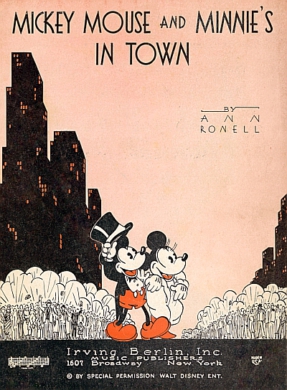 f that the corporation actually owes to one cartoon character in particular, a savvy and curious mouse originally conceived as “Mortimer.” That may have resulted in creating a character by the name of “Mortimer Mouse.”
f that the corporation actually owes to one cartoon character in particular, a savvy and curious mouse originally conceived as “Mortimer.” That may have resulted in creating a character by the name of “Mortimer Mouse.”
Luckily, by a change of heart we today know it as Mickey Mouse, date of birth: November 1928.
Without Mickey, there would be no Duckburg, no Uncle Scrooge, no Donald, no Goofy and so forth.
Looking back in 1954, Walt Disney, who together with cartoonist Ub Iwerks brought it to life, full of respect said, “I only hope that we never lose sight of one thing – that it was all started by a mouse.”
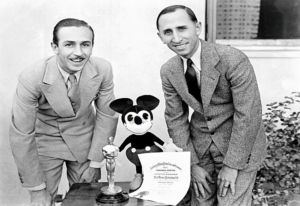 With the “Ultimate History” of “The Mouse Who Changed the World” Taschen presents the most expansive illustrated publication on the Disney universe. The almost 500 pages not only are Mickey’s biography, they explain the mythology behind the cartoon star and tell of the many changes, adventures, new technologies and transformations of design both the company and Mickey went through.
With the “Ultimate History” of “The Mouse Who Changed the World” Taschen presents the most expansive illustrated publication on the Disney universe. The almost 500 pages not only are Mickey’s biography, they explain the mythology behind the cartoon star and tell of the many changes, adventures, new technologies and transformations of design both the company and Mickey went through.
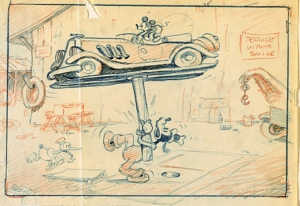 In that respect – experiencing Mickey as a blend of Walt Disney’s alter ego and strong confidence in the nation’s future – always representing the daring, optimistic, resilient and positive version of the company and the national spirit, in a way.
In that respect – experiencing Mickey as a blend of Walt Disney’s alter ego and strong confidence in the nation’s future – always representing the daring, optimistic, resilient and positive version of the company and the national spirit, in a way.
The character first surfaced in the cartoon Steamboat Willie from 1928 and yes, the (cartoon) camera immediately loved Mickey. So did audiences around the world. Legendary comic and cartoon artists who worked for Disney for decades naturally are in the limelight in the book, as readers encounter their art in the countless pictures featured here.
The list includes legends such as Carl Barks, Romano Scarpa, Win Smith, Ferdinand Horvath, Fred Moore, Floyd Gottfredson, Giorgio Cavazzano, Manuel Gonzales, Paul Murry, Byron Erickson, César Ferioli, and Noel Van Horn.
And even if today many fans see Mickey as a comic book character who profited from British and Italian content and European sales, his “life” started on celluloid, not on paper. Over time, Mickey was present on the radio, in cinemas, storybooks, comic books, in art galleries, on all kinds of merchandise, on TV and of course since 1971 in Disneyland, even larger than life. And of course he was awarded a star on the Hollywood Walk of Fame.
The giant volume contains hundreds of sketches, behind-the-scenes photography, animation art, rare photographs, film stills, vintage comic book pages and covers Mickey’s 122 cartoons, the comic adventures, the vast realm of merchandise and memorabilia around worldwide, portrays the Mickey Mouse Club and even unveils unfinished projects.
Fifteen detailed chapters dive deep into the Disney world and explore several themes and developments; most notably here are chapters 4 “Technicolor Extravaganzas,” and 13, “Pop and Nostalgia,” respectively. With unlimited access to Disney’s vast historical collections as well as public and private collections, authors J. B. Kaufman, David Gerstein, and editor Daniel Kothenschulte have quite a story to tell.
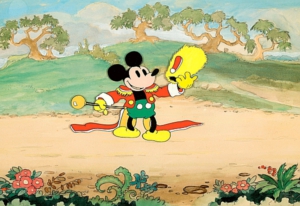 Kaufman and Gerstein are two renowned experts on the subject; they have published extensively on Disney’s magic. They dug up animation drawings, historical photographs, concept art, story sketches, background paintings, and report many incidents, conversations and important meetings and discussions on design, plots and music, which resulted in screen gems such as The Band Concert, Brave Little Tailor, Fun and Fancy Free and the amazing, nearly psychedelic feature-length film Fantasia with a brilliant soundtrack.
Kaufman and Gerstein are two renowned experts on the subject; they have published extensively on Disney’s magic. They dug up animation drawings, historical photographs, concept art, story sketches, background paintings, and report many incidents, conversations and important meetings and discussions on design, plots and music, which resulted in screen gems such as The Band Concert, Brave Little Tailor, Fun and Fancy Free and the amazing, nearly psychedelic feature-length film Fantasia with a brilliant soundtrack.
Further details unveil Mickey’s very early radio shows and his patriotic service during WWII, which he dutifully completed, like almost all other American comic book and cartoon characters.
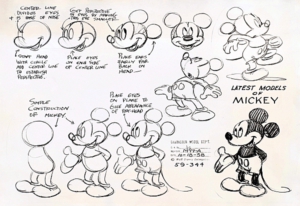 This definitely is the ultimate history of the famous mouse, and every page here is as entertaining as the cartoons and the comics.
This definitely is the ultimate history of the famous mouse, and every page here is as entertaining as the cartoons and the comics.
The 40th edition is available in three languages (not multilingual) and three different versions and sizes.
Review by Dr. A. Ebert © 2023
Daniel Kothenschulte (ed.) Walt Disney’s Mickey Mouse. The Ultimate History. 40th Ed. XXL Version. Hardcover, with ribbon bookmark, 11.4 x 15.6 in., 12.56 lb, 496 p., ISBN 978-3-8365-5284-4
Daniel Kothenschulte (ed.) Walt Disney’s Mickey Mouse. The Ultimate History. 40th Ed. XL Version. Hardcover, 9.8 x 13.4 in., 6.97 lb, 496 p., ISBN 978-3-8365-8355-8
Daniel Kothenschulte (ed.) Walt Disney’s Mickey Mouse. The Ultimate History. 40th Ed. Hardcover, 6.1 x 8.5 in., 2.73 lb, 512 p., ISBN 978-3-8365-8099-1

